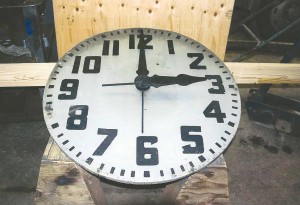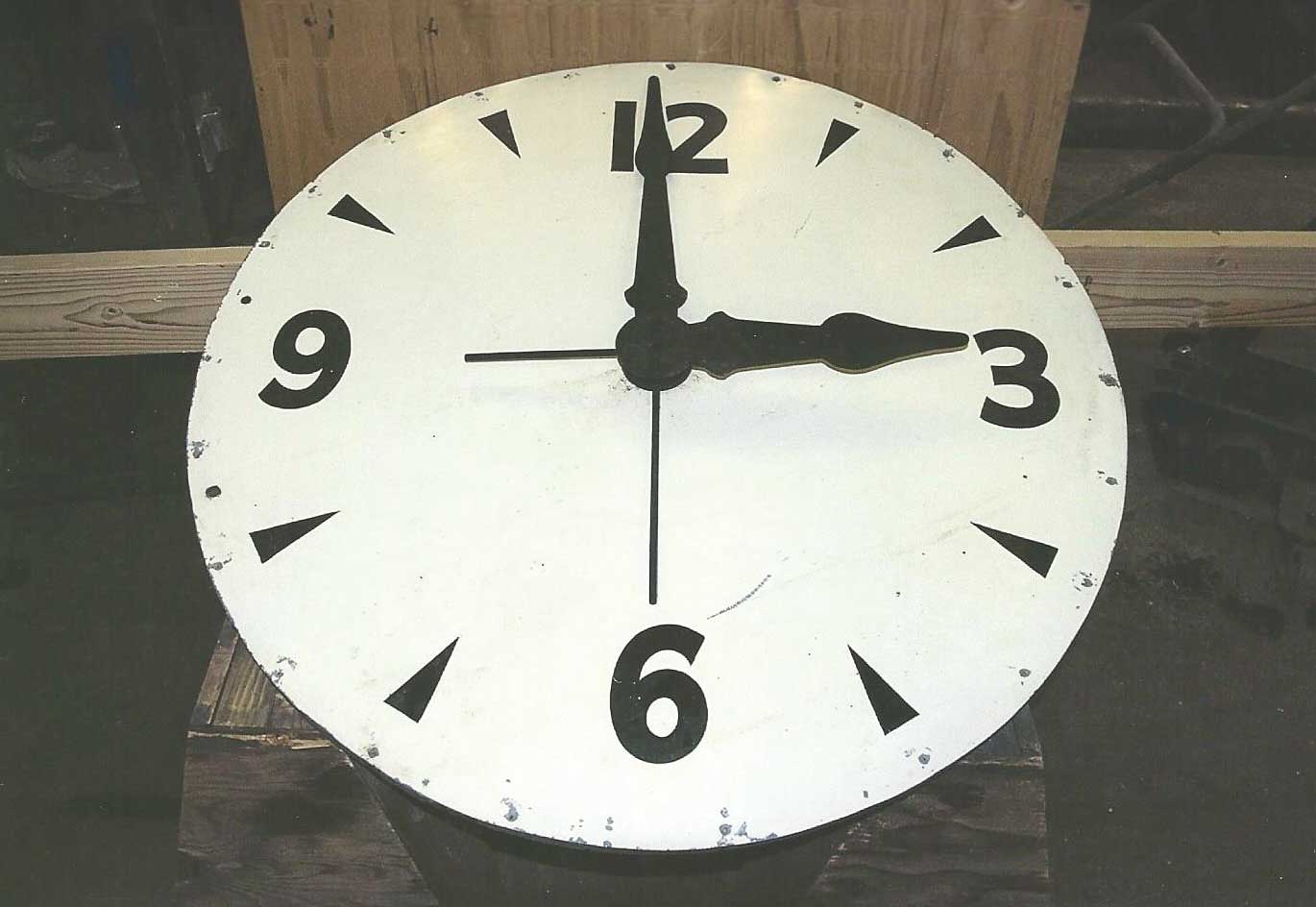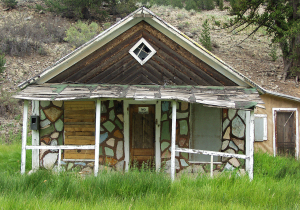by Susan Foster
The Velhagen Clock, located for over 50 years at 505 State Avenue in Alamosa, might be called a “horologe”: an obsolete term for a timepiece that is antiquated yet timeless. Alamosa’s historic, 18-foot-high, two-ton, Velhagen Clock is a five-foot diameter, two-faced structure with cast iron gingerbread ornamentation which was built by the infamous Seth Thomas (later renamed Thomaston) of Wolcott, Connecticut. Like a grave marker, the impression left by this horologe can be seen in the sidewalk near the southwest corner of Main and State Streets.

When the clock was made and when it arrived in Alamosa are mysteries. The Balzer Family Clock Works, tower clock specialists, noted that 212 such post (or street) clocks were made from about 1890-1910 (John Davis, personal communication, June 13, 2013). There are only about nine such clocks left worldwide. John Davis, local master machinist, described the clock in a phone conversation to Mr. Balzer of the Balzer Family Clock Works, who concluded that the clock was made circa 1892. However, research librarians with the National Association of Watch and Clock Collectors (personal communication, Sept. 27, 2014) surmise that the clock was built circa 1907. Karen Velhagen Boxberger, daughter and niece of the Velhagen Brothers, is quite certain that the clock was new when it arrived in Alamosa in the early 1900s (personal communication, July 8, 2014).
Ewald Herman Velhagen, known as “Blacky,” and his older brother, Edward Gustave, started the Velhagen Bros. Jewelers in Alamosa about 1904. Of East Prussian ancestry, the brothers were born in Cleveland, Ohio and learned the art of watchmaking and repair from their maternal uncle, Jacob Mascher. They moved west as young adults with their families to seek a healthy climate and economic prosperity.
Blacky was a time inspector for the Denver & Rio Grande Western Railroad in Alamosa. Employees from the railroad came to Velhagen Bros. every day to set their official company pocket watches. The Velhagen Bros. Jewelers and its timepieces were integral to the business operations of Alamosa and the entire San Luis Valley.
Edward died in 1940, leaving Blacky to tend to the business alone. Those were days when watches and other timepieces were made of high-quality materials and fine craftsmanship and, therefore, were worth repairing and keeping for a lifetime, if not generations. Blacky spent many late nights in the shop fixing soldiers’ watches before they shipped out for duty during World War II.
Karen recalls a funny story that her father once told. He was setting the time on the Velhagen Clock one morning, which had to be hand-cranked every eight days, and for some odd reason the 12- to 16-inch long clock hands started spinning uncontrollably. About that time a man entered the street from a nearby establishment and saw the huge clock hands twirling around; it befuddled him so much that he passed out! Blacky died in 1957, having operated the Velhagen Bros. Jewelers for over 50 years. The store was eventually sold to Harding Bullock Jewelers of Pueblo.
In the 1960s, the city of Alamosa needed to widen the streets to accommodate larger vehicles and increased traffic. The bulldozers were fired up and ready to take up the street, the sidewalk and the always dependable Velhagen Clock. The loyal, steady icon of Alamosa had to go.

Alamosa’s treasured horologe, however, could not be so easily dismissed or forgotten. As fate would have it, the city streets not only needed widening, but the sewer system also was to be upgraded to divert flooding from the Rio Grande down State Avenue. John Davis, mentioned earlier, is Alamosa born and raised. He responded quickly to offer a solution. The city accepted his proposal to exchange his skills at building an upgraded city sewer system for the beloved Velhagen Clock. The clock was saved from the fired-up bulldozers on State Avenue.
Master machinists John Davis and J.R. Olson have spent years carefully and skillfully refurbishing the intricate cast iron machine. The Velhagen Clock – the cherished antique horologe, the Crown Jewel of Downtown Alamosa – remains highly protected in three pieces waiting for the time, opportunity and resources to once again return to the city’s public eye.

Seth Thomas quit making post clocks like Alamosa’s own Velhagen Clock in 1939 due to the risk of air attack during World War II. Antique post clocks are priceless in today’s market and require very skilled craftsmanship to refurbish. What is the fate of the Velhagen Clock? Will Alamosa’s Crown Jewel be able to stand proudly again in a place of honor in the city that welcomed it over 100 years ago? Only time will tell.
Susan Feldman Foster is a history junkie, part-time nurse practitioner, and along with her husband, an outdoor aficionado (except when the Spring winds come to the San Luis Valley)!




